Real Lace Revisited
Other Books by James P. MacGuire
London and the English Countryside
Campion (with Christopher Buckley)
Beyond Partisan Politics
Miracle in East Harlem: The Fight for Choice in Public Education (with Seymour Fliegel)
Dusk on Lake Tanganyika
The Rockaway Hunting Club at 125 (with Benjamin Allison)
Newman and the Intellectual Tradition
The Catholic Shakespeare?
Modern Science/Ancient Faith
The Catholic William F. Buckley Jr.
Catholicism and the American Experience
Real Lace Revisited
James P. MacGuire
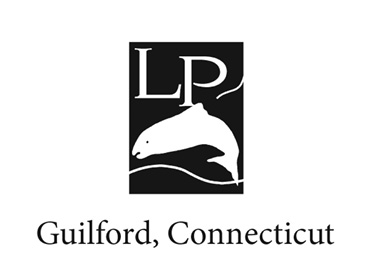
For Michelle, half-Kiwi, half-Californian,
daughter of the Sacred Heart

An imprint of Rowman & Littlefield
Distributed by NATIONAL BOOK NETWORK
Copyright 2017 by James P. MacGuire
All rights reserved. No part of this book may be reproduced in any form or by any electronic or mechanical means, including information storage and retrieval systems, without written permission from the publisher, except by a reviewer who may quote passages in a review.
British Library Cataloguing in Publication Information available
Library of Congress Cataloging-in-Publication Data
Names: MacGuire, James P., author.
Title: Real lace revisited / by James P. MacGuire.
Description: Guilford, Connecticut : Lyons Press, [2017] | Includes bibliographical references.
Identifiers: LCCN 2016042840 (print) | LCCN 2016044377 (ebook) | ISBN 9781493024902 (hardback : alkaline paper) | ISBN 9781493024926 (e-book)
Subjects: LCSH: Birmingham, Stephen. Real lace. | Irish AmericansBiography. | Upper classUnited StatesBiography. | Rich peopleUnited StatesBiography. | United StatesSocial life and customs. | United StatesEthnic relations.
Classification: LCC E184.I6 B573 2017 (print) | LCC E184.I6 (ebook) | DDC 305.8916/2073dc23
LC record available at https://lccn.loc.gov/2016042840
 The paper used in this publication meets the minimum requirements of American National Standard for Information SciencesPermanence of Paper for Printed Library Materials, ANSI/NISO Z39.48-1992.
The paper used in this publication meets the minimum requirements of American National Standard for Information SciencesPermanence of Paper for Printed Library Materials, ANSI/NISO Z39.48-1992.
Acknowledgments
It goes without saying that my first thanks go to Stephen Birmingham, who conceived and wrote the original Real Lace .
We had met many years ago at Saratoga Race Course in Mary Lou Whitneys box, and when I approached him in late 2014 to inquire about updating and expanding Real Lace , Mr. Birmingham was kind and accommodating. His agent, Henry Thayer, of Brandt & Brandt, has been a pleasure to work with, as has my old friend and agent, the venerable Jacques de Spoelberch. None of this would have been possible without the interest and encouragement of Jed Lyons and his team at Rowman & Littlefield, including first and foremost Eugene Brissie, Emily Tyler, and Alex Singer, who shepherded the book into being patiently and professionally. I am grateful to all of them for the contributions they have made to Real Lace Revisited and to all those family, friends, and other associates whom I called upon for assistance in the research and writing. They responded generously and wisely.
Ronald Hoffman and Sally D. Masons Princes of Ireland, Planters of Maryland was an invaluable resource in writing on the Carroll family. Jean Steins West of Eden provided fresh perspectives on the Doheny family. The speakers at the first Portsmouth Institute in 2009 on The Catholic William F. Buckley Jr. also provided me with many insights I would not otherwise have had, and I am grateful to them. Jim Forests talk on Dorothy Day at the 2013 Portsmouth Institute was equally valuable in writing about her. Finally, George Weigels and Peter Steinfels competing visions of the future of the American church, delivered at the 2013 Institute on Catholicism and the American Experience , were thought-provoking and deserved to be summarized here. J.O. Tobin IIs encyclopedic knowledge of San Franciscan genealogies was essential.
Finally, I would be remiss not to thank my old English teacher, the late Father Damian Kearney, O.S.B., for suggesting to Mr. Frank Pagliaro, then a student at our mutual alma mater, Portsmouth Abbey School, that he might ask me for help in writing a story on the original Real Lace for the school newspaper in 2010. Out of that kernel came this book. All of those mentioned above share in whatever merits this book may have, while I alone am responsible for any errors or other shortcomings.
Preface
In Praise of Stephen Birmingham
Stephen Birmingham died in December of 2015 at his home in Manhattan after a brief struggle with cancer. He was eighty-six.
Mr. Birmingham made more than a dozen literary excursions into what his New York Times obituary termed pop sociology, including the best-selling Our Crowd , which chronicled the rise of the first wealthy German-Jewish families in America; a group portrait of the Dakota, the exclusive Manhattan apartment building on the Upper West Side; and explorations of the African-American and Irish-American elites. Real Lace: Americas Irish Rich was the title of his book on this last group, published in 1973.
When I approached him in late 2014 to inquire about updating and expanding Real Lace , Steve immediately offered his cooperation. I am grateful for his encouragement and regret we did not have the chance to spend more time together as I got down to writing. I would have enjoyed his wry sense of humor and profited from his vast experience in chronicling Americas moneyed classes.
At the same time, the fact that Stephen Birmingham was not available to guide me on this revisitation of the subject may, in fact, have forced me to look at the subject afresh and enabled me to make my own judgments. For one thing, neither my family nor any of the other Real Lace families would have ever dreamed of referring to themselves as First Irish Families, or FIFs, in Mr. Birminghams phrase. The audacity of such pretension would have appalled them. In fact, I can remember the delight my father took when a rather stuffy aunt who had married into the family let it be known that she had hired a professional genealogist to establish the American branch of the Butlers (from whom we were descended) precise relation to the Butler Dukes of Ormond. Needless to say, despite this gentlemans best efforts, the answer came back... well, lets just say no answer came back. Our Butlers were apparently, to use the late C.D.B. Bryans delicious phrase, more felonious than thou.
My father hoped that at a bare minimum an ample strain of horse thievery would show up in the bloodlines, but in the end his dear and very determined aunt simply stopped alluding to the great research project, the professional genealogist doubtless suffered her withering scorn, and we were joyfully liberated to hazard our own, not always printable, improvisations about his findings.
Nor was it true that the so-called First Irish Families all knew each other, though some did, of course, if they grew up in the same city (New York or San Francisco), went to the same schools (the Priory, Canterbury, or Sacred Heart), or worked in related industries, such as Wall Street.
Furthermore, the families Birmingham profiled are only a small subset of those Irish Americans who attained significant wealth in the latter nineteenth and first half of the twentieth centuries, and an even smaller subset of those who have achieved it since. So it took some editorial discrimination to decide exactly how and whom to focus on nearly half a century on. Some families have declined, of course. Others have held their own or thrived. And many new fortunes have been made.
Next page
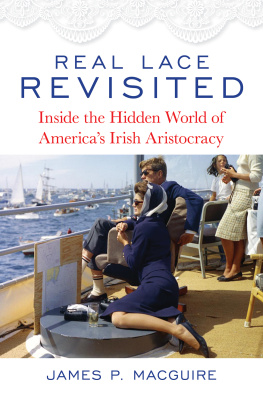

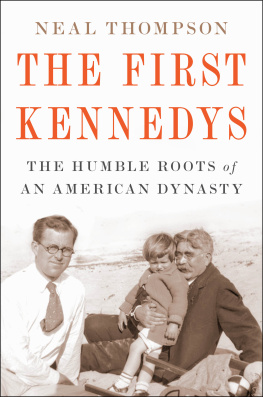
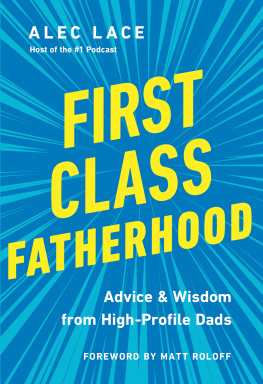
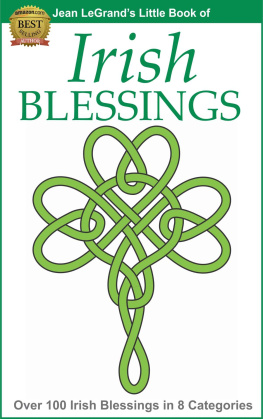



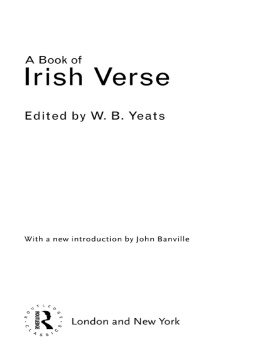


 The paper used in this publication meets the minimum requirements of American National Standard for Information SciencesPermanence of Paper for Printed Library Materials, ANSI/NISO Z39.48-1992.
The paper used in this publication meets the minimum requirements of American National Standard for Information SciencesPermanence of Paper for Printed Library Materials, ANSI/NISO Z39.48-1992.